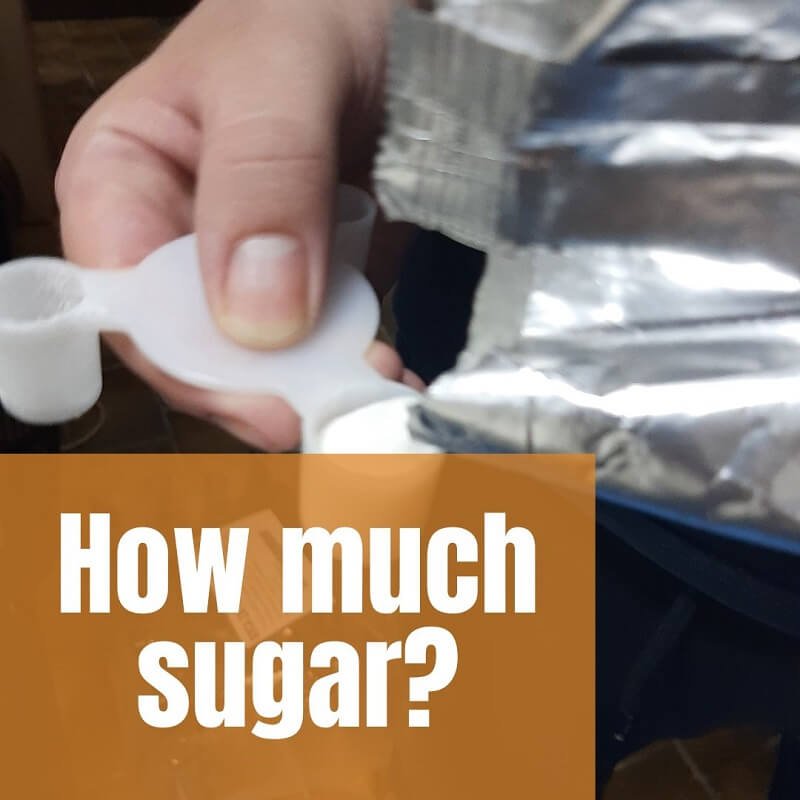
Priming sugar makes the yeast go active from the dormant stage and as a result, you have a beautifully carbonized bottle of homebrew.
Bottle priming depends on a few factors such as the type of homebrew, desired carbonation levels, and conditioning temperature. Not all beers need to be highly carbonated and there are homebrews like mead that are better enjoyed flat.
In this article, I’ll guide you on how to find the right amount of priming sugar for your homebrew exactly and will share a few tips on successful priming. Just be sure that even if you want your brew extra sparky, adding too much priming sugar can have serious consequences and in that case, you’ll have to act quickly to fix it.
It’s recommended to put between 0.75 oz to 1 oz priming sugar per gallon of beer. However, each beer style uses a different Co2 volume, so for less carbonation put less sugar within the mentioned range.
I have created a calculator that will tell you how much priming sugar you’ll need based on quantity, desired Co2 levels and its temperature after fermentation. It’s an easy-to-use, free tool and it’s easier to calculate it this way than in head.
Moreover, Co2 volume is often written in the recipe instructions and if you try to brew with your own recipe you can follow the standard measurements and guess what Co2 volume would fit the style better. I add 1 oz per gallon when brewing lagers, but I put around 0.80 oz when brewing most ales.
How much priming sugar per gallon?
| Batch size | Sugar amount |
|---|---|
| 1 gallon (4.5 liters) | 0.75 to 1 oz (21-28 gram) |
| 3 gallon (13.6 liters) | 2.25 to 3 oz (64-85 gram) |
| 5 gallon (23 liters) | 3.75 to 5 oz (106-142 gram) |
This table is an average I believe that will work for many beer styles, but it’s more of an estimation for beginner brewers. Refer to my calculator for the accurate results you need.
How much priming sugar per bottle?
| Bottle size | Sugar amount |
|---|---|
| 750 ml | 0.12 to 0.16 oz (3.5-4.5 gram) |
| 500 ml | 0.07 to 0.10 oz (2-3 gram) |
| 330/350 ml | 0.05 to 0.07 oz (1.5-2 gram) |
If you choose to add priming sugar in a bottle directly, it will be a more tedious process but it comes with benefits I’ll explain soon in this article.
This is my favorite method and I’ve been doing it since day one, but it isn’t wrong to add priming sugar directly into the fermenter.
How much a priming sugar depends on a beer-style
As you can see, it’s important that you understand what the beer style you are brewing demands, so it’s impossible to give you one priming formula for all homebrew beers. However, it’s possible to follow the average for ales and lagers which will suit most beers.
This is also very suitable for beginner homebrewers because these standard measurements will result in proper carbonation instead of risking under-carbonation or over-carbonation.
Moreover, lagers usually like higher Co2 volume because it makes it sparky and naturally fits with the flavors lagers bring. Ales are usually hoppier or simply more focused on rich flavors which are rarely found in commercial lager beers made for a broad audience. For this reason, many ales enjoy lower Co2 volumes because it helps certain flavors to come out.
Furthermore, Co2 volume can be absolutely minimal when brewers introduce another gas called nitrogen. If you ever had a pint of Guinness you’ll know what I talk about. In this case, you would only put 30% of Co2 and 70% of nitrogen because this would be the right equation to make the gas mix effective, yet to keep the flavors balanced.
As you can see, there are a lot of gas volumes in beer styles, so it’s worth to make entire research to get a full picture of possibilities and which affects what.
Do not overprime your beer!
It’s possible to put more sugar than what I mentioned, but with it comes the risk of bottle bombs and you may reach the point where the Co2 volume will actually make the beer worse and annoyingly foamy. More Co2 doesn’t mean better beer and it can even ruin the beer because too much Co2 can mask the true character of the beer.
Bulk priming in a fermenter VS priming directly in a bottle
You have two options to prime your beer and it’s either to prepare priming solution and bulk prime the whole batch in the fermenter or to individually add sugar bottle per bottle.
I prefer to add sugar to a bottle, fill it cap it, and repeat the process because I’ve been taught to do it that way.
However, bulk priming is another great method, but I feel like beginners should do what they are most comfortable with. If you are not comfortable with opening a fermenter, adding the solution of boiled sugar and water, and stirring the solution with the beer because you are afraid of doing it wrong then you can simply prime directly in a bottle.
Bulk priming requires you that correctly mix the priming solution with the beer and it means that you need to stir slowly (with a long enough sanitized spoon) without splashing and introducing too much air to the beer. Moreover, you might catch some sediment from the bottom and mud the beer in which case you’ll have to clear it with clearing methods.
In my opinion, it’s easier to add priming solution bottle by bottle, especially for beginners who are just starting.
